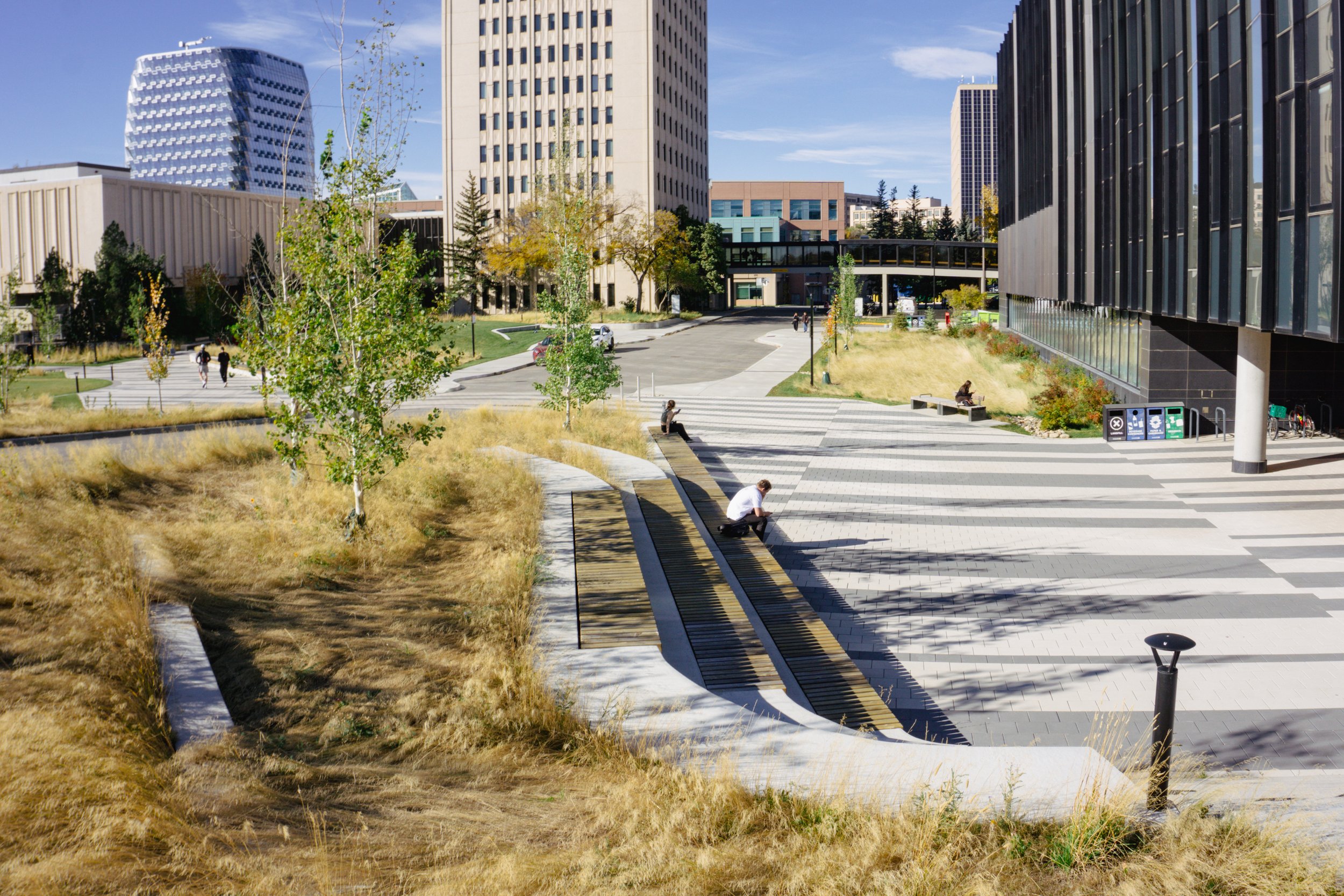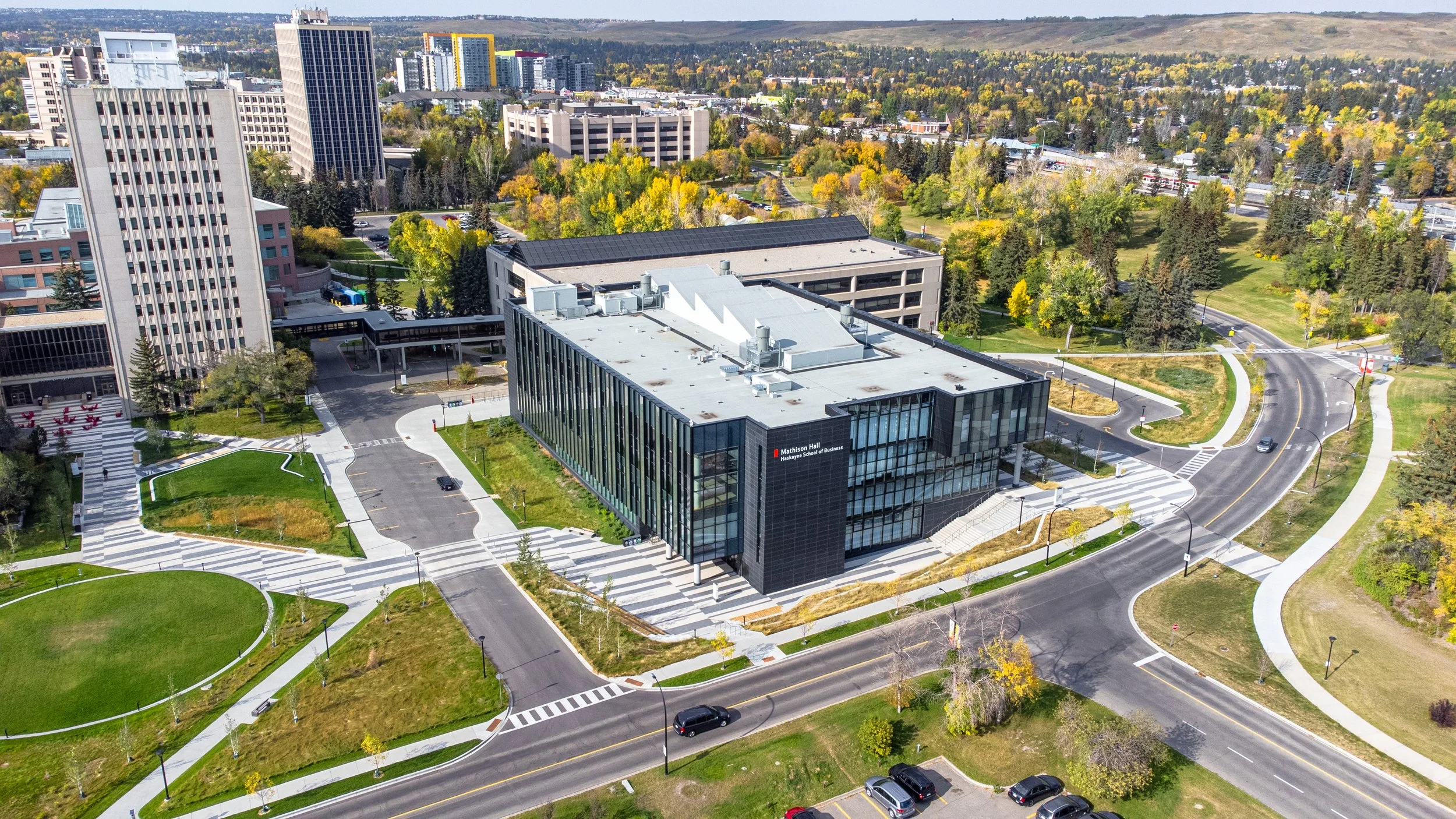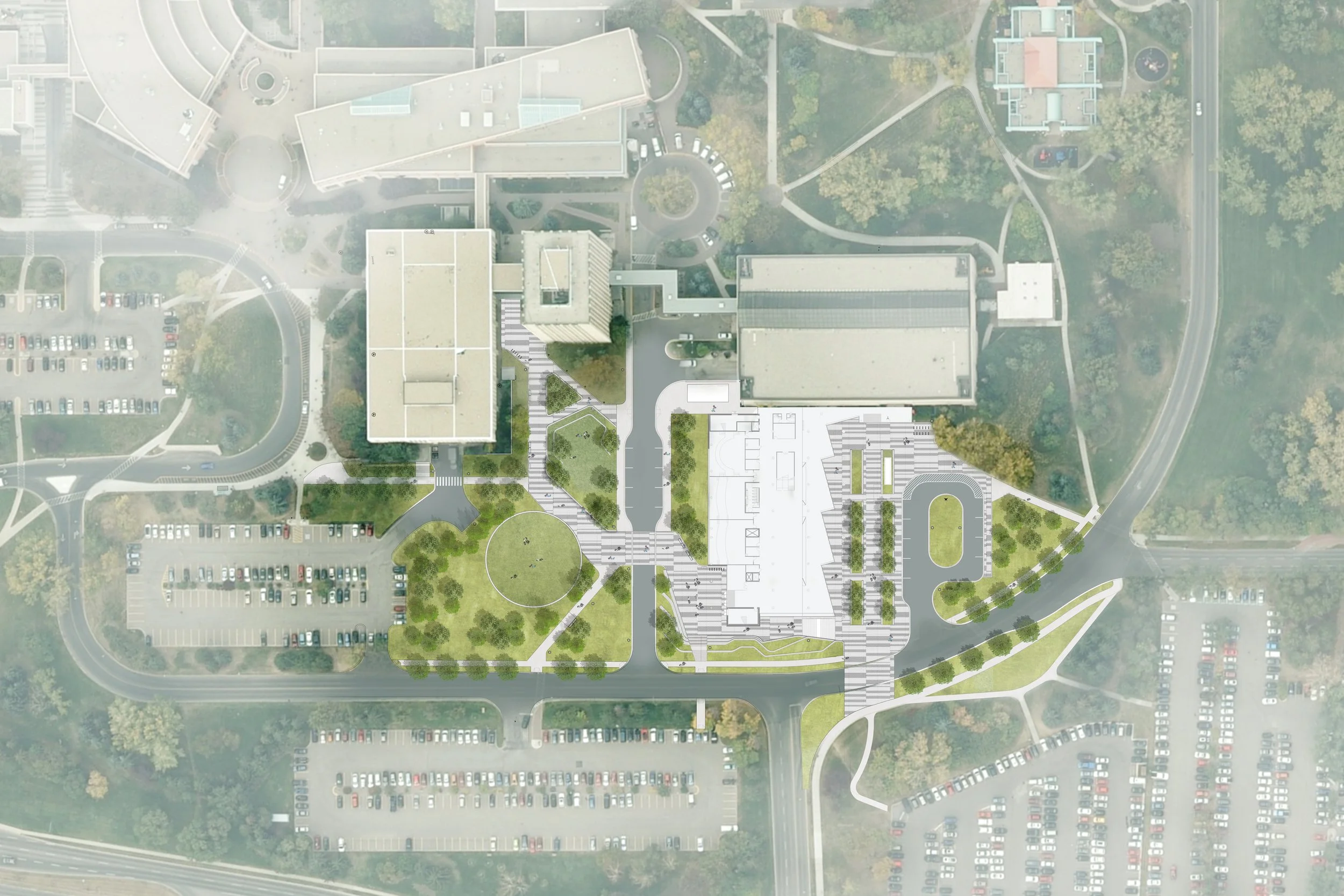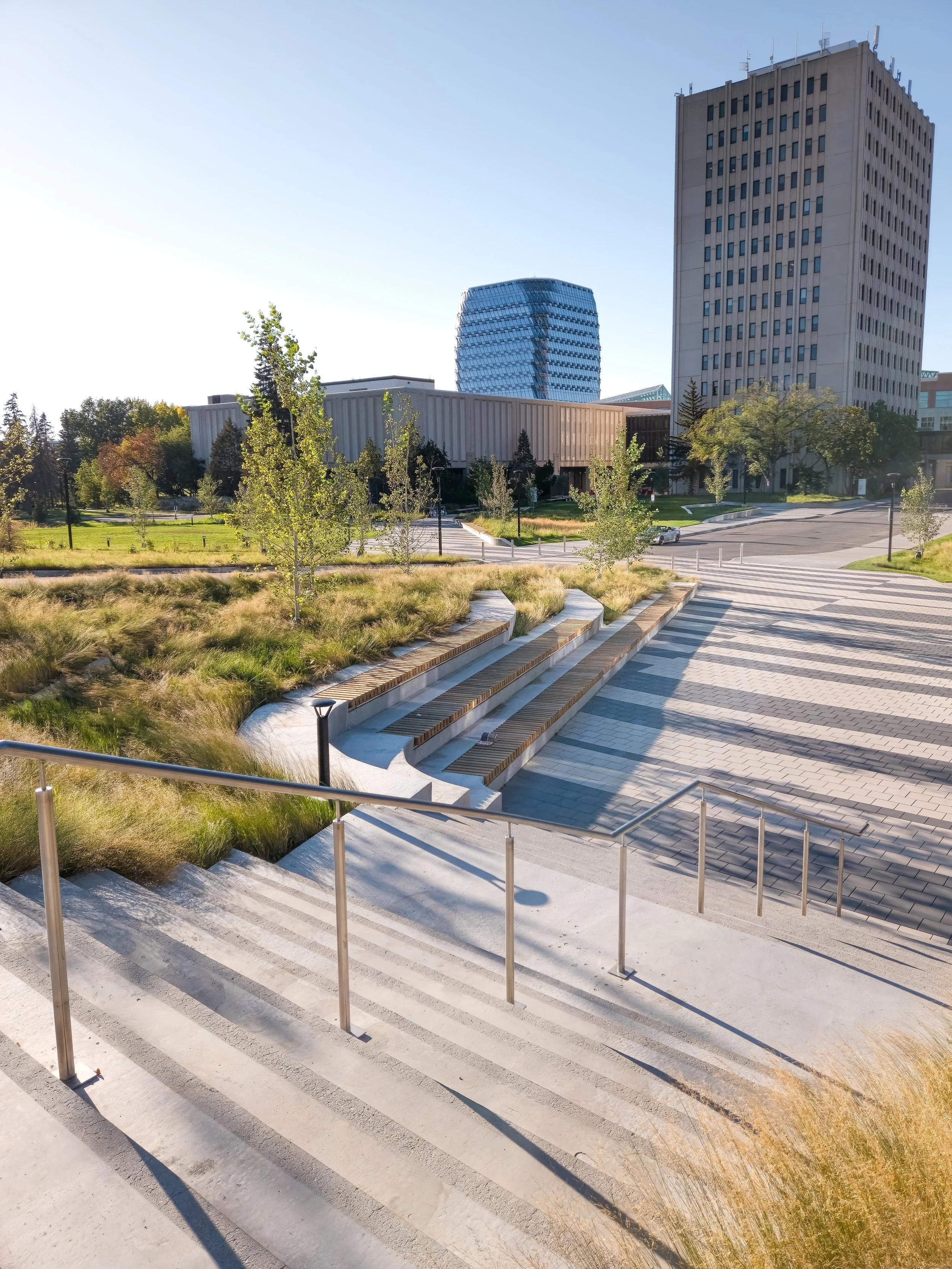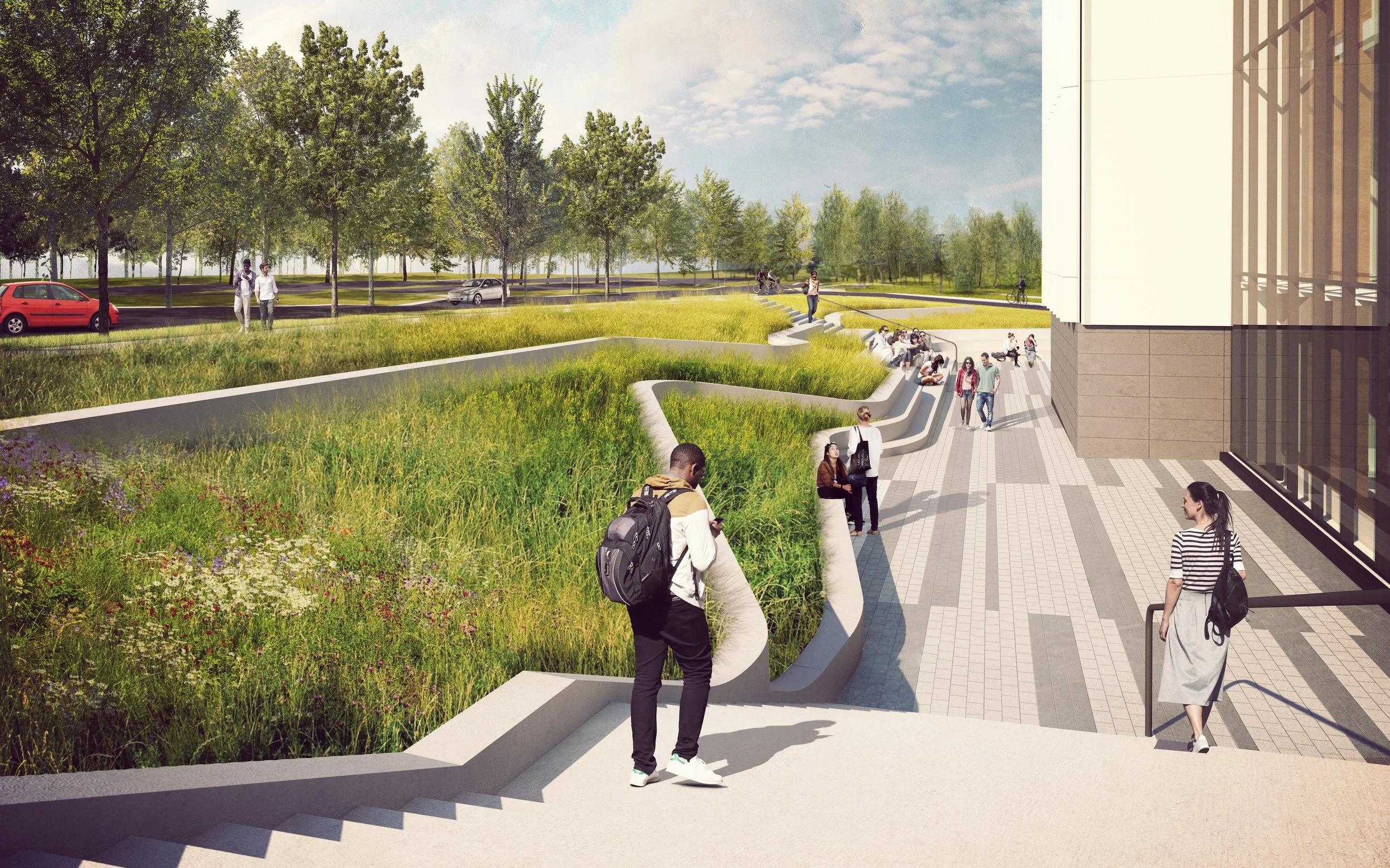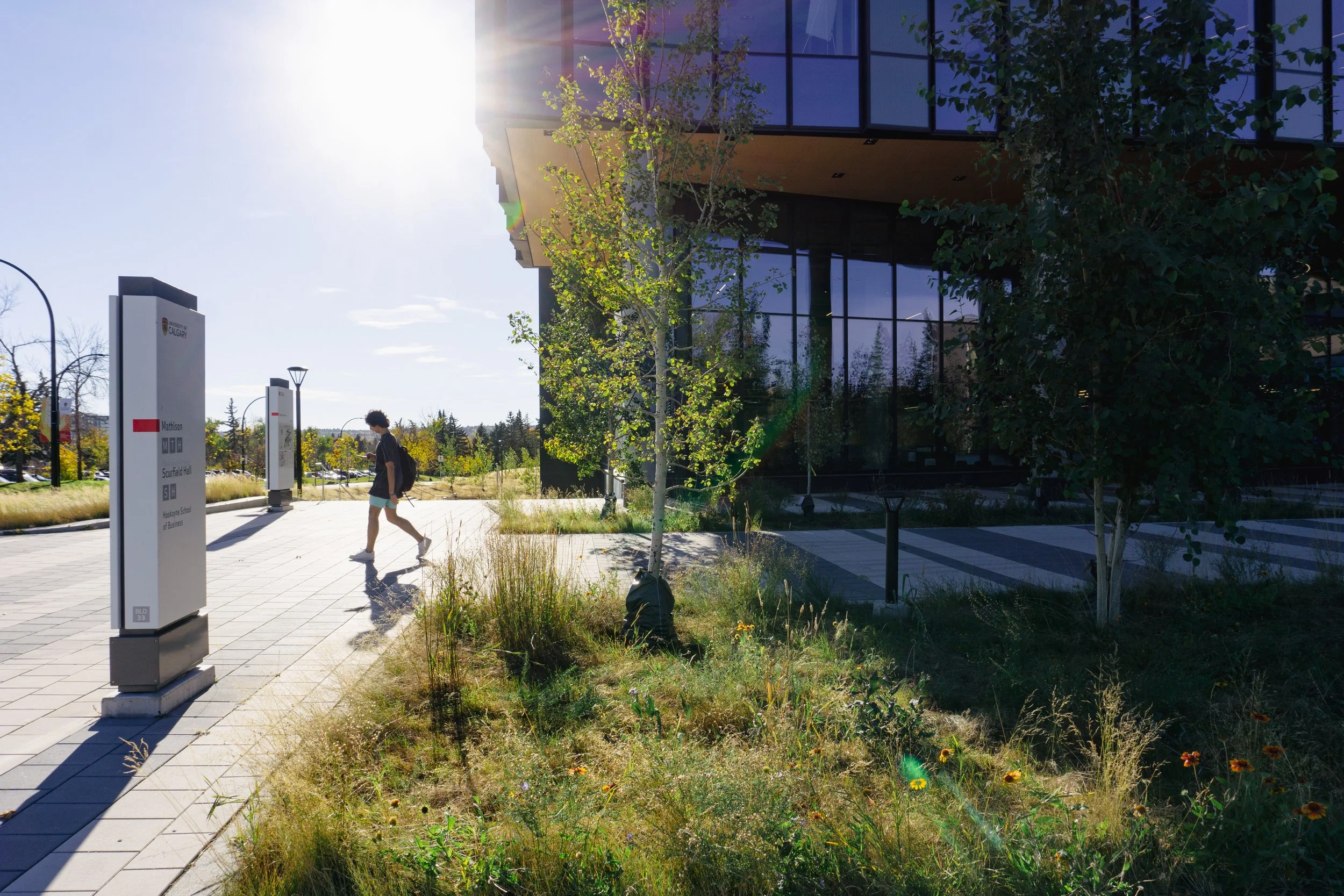Mathison Hall
Client University of Calgary
Location Calgary | Alberta | Canada
The University of Calgary commissioned a new academic building for the Haskayne School of Business, entitled Mathison Hall, to expand on their existing facilities and create a dynamic, technology rich, highly sustainable and innovative new facility to meet the expanding program needs. O2 was retained to re-design approximately 2.5 ha of the campus landscape surrounding the Haskayne School of Business to support the functions of the students in the adjacent buildings. Key features of the design include new plazas with social spaces and welcoming building entry points, a flexible event lawn, a reconfigured service road and drop-off loop and green spaces that incorporate rain gardens to manage stormwater.
The primary goals of the project include:
Promote positive social and learning interactions in an included setting;
Create a distinctive character and destination tied to the broader campus and regional landscape;Improve connectivity across campus;
Weave cultural and ecological narrative throughout the landscape.
The project aligns and supports the goals of the University’s Indigenous Strategy. The design embraces Indigenous ways of knowing and being, including how the land’s natural cycles guide the way people move through, occupy and are affected by the seasonal changes. Responding to campus activity throughout the year, spaces are designed to accommodate activities tied to university life as priorities and the calendar change.
The planting design has been conceived to coincide with the seasonal variation in activity. When certain places are active, plants respond with seasonal interest. Native and adaptive plant species and communities known to the regions are utilized in the planting design and in consultation, species that hold Indigenous significance were selected. Appropriate use of these plant communities within the landscape will help create a self sustaining landscape, resulting in low maintenance requirements while increasing biodiversity and ecological function. In turn, a narrative of the local and regional landscape is expressed through the site.

